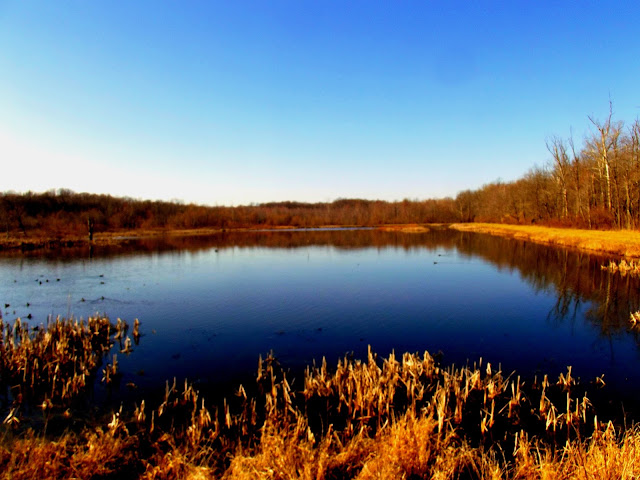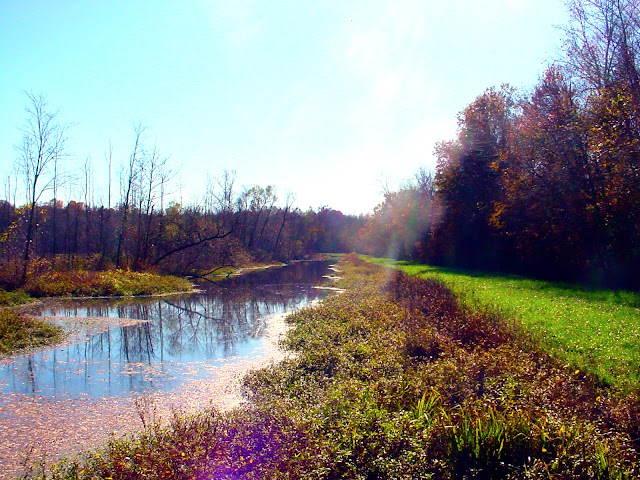Muscatatuck National Wildlife Refuge
Wildlife lovers should think about making a trip to Muscatatuck National Wildlife Area. The Refuge is on US 50 just east of Seymour, Indiana. The diversity of wildlife visible to even casual visitors to the Refuge is a delightful thing to see. The Refuge consists of 7,724 acres of which forestland covers about seventy percent. The remainder is wetlands managed by National Park Service personnel.
Muscatatuck River
The refuge takes its name from the Muscatatuck River that flows through the Refuge. The low, swampy area adjacent to the river forms the wetlands that make up the Refuge. The name Muscatatuck derives from an Amerindian word meaning “the land of the winding waters,” an apt name for this rambling river. The river winds and rambles through the southern Indian countryside on its way to its mouth in the East Fork of the White River.
Wildlife at Muscatatuck National Wildlife Refuge
The best time to visit is in spring or fall because that is when the wildlife is most active. This is true especially of the waterfowl. These include a stunning variety of ducks, geese, grebes, great heron and other birds. Visitors can also, if lucky, watch the otters frolic in the waters and white tailed deer graze on the forest's edge. The Refuge manages a wide variety of habitat in Muscatatuck National Wildlife Refuge. There are grasslands, wetland and hardwood forests. Refuge personnel adjust the wetland waters seasonally to manage the plant species. They plant grain crops like corn to provide food for the animals and conduct periodic burns to control trees in the grasslands. Over 280 species of birds live or pass through in the Refuge, including a nesting pair of eagles that with luck a visitor might see.
Hiking
Hikers will enjoy hiking the eight trails, most of which are less than a mile in length. The two trails on the south end of the Refuge, the East and West River Trails are longer but close from time to time due to flooding. These two trails are not maintained as well as the others and hikers may find snakes along the marsh on the West River Trail. These trails travel along the Muscatatuck River for a portion of their lengths and will afford sightings of a nice variety of wildflowers. Visitors may also hike the maintenance roads that traverse between the marshes. Indeed, the hiker will find the greatest numbers of waterfowl and otters along these roads, as well as river otters cavorting in the placid waters. Morning and evening are the best times to visit, as during those times the birds and animals are most active.
Roads and Auto Tour
An auto tour along the marshy areas can yield a surprising number of heron, hawks and waterfowl, as well as white tailed deer. There are several pull off points for travelers to stop and view or photograph the wildlife.
Activities
Hiking, hunting, photography and fishing are the most popular activities at Muscatatuck National Wildlife Area. Small boats are permitted on some of the lakes; an Indiana State Fishing License is required for fishing. Hunters will need an Indiana State Hunting License and the appropriate stamps and tags. Boats can be either rowed or powered by an electric trolling motor.
Visitor Center
Before entering the Refuge, it is best to visit the Visitor Center. The center features a fabulous bookstore and a bird viewing area at the rear. There is also a new auditorium in which naturalists conduct wildlife programs. There are also clean restrooms at the Visitor Center. National Park personnel also hold special events and field trips throughout the year. For more information, calls the phone number listed below or visit the web site. This is an excellent place to visit to purchase books or pick up the self-guided auto tour and hiking trail map. Make sure you bring a picnic lunch, as there are many places suitable for a picnic. Nearby Seymour has a large variety of restaurants and grocery stores for supplies, as well.
Muscatatuck National Wildlife Refuge will celebrate its 50th anniversary on September 17, 2016.
Refuge staff will conduct a bird walk at 7:30 AM and other special events throughout the day. These will include:
Passport to Nature
Memorabilia
A Walk Down Memory Lane
Talks by Special Guests
Cake
Muscatatuck National Wildlife Refuge
12985 E. U.S. Hwyl 50
Seymour, IN 47274
812-522-4352
muscatatuck@fws.gov.
 |
| Muscatatuck National Wildlife Refuge - Wetlands |
 |
| Exploring Indiana's Historic Sites, Markers & Museums - South East Edition |
Muscatatuck River
The refuge takes its name from the Muscatatuck River that flows through the Refuge. The low, swampy area adjacent to the river forms the wetlands that make up the Refuge. The name Muscatatuck derives from an Amerindian word meaning “the land of the winding waters,” an apt name for this rambling river. The river winds and rambles through the southern Indian countryside on its way to its mouth in the East Fork of the White River.
 |
| Muscatatuck National Wildlife Refuge - Waterfowl |
The best time to visit is in spring or fall because that is when the wildlife is most active. This is true especially of the waterfowl. These include a stunning variety of ducks, geese, grebes, great heron and other birds. Visitors can also, if lucky, watch the otters frolic in the waters and white tailed deer graze on the forest's edge. The Refuge manages a wide variety of habitat in Muscatatuck National Wildlife Refuge. There are grasslands, wetland and hardwood forests. Refuge personnel adjust the wetland waters seasonally to manage the plant species. They plant grain crops like corn to provide food for the animals and conduct periodic burns to control trees in the grasslands. Over 280 species of birds live or pass through in the Refuge, including a nesting pair of eagles that with luck a visitor might see.
 |
| Muscatatuck National Wildlife Refuge - River Otters |
Hiking
 |
| Muscatatuck National Wildlife Refuge - Hiking |
Hikers will enjoy hiking the eight trails, most of which are less than a mile in length. The two trails on the south end of the Refuge, the East and West River Trails are longer but close from time to time due to flooding. These two trails are not maintained as well as the others and hikers may find snakes along the marsh on the West River Trail. These trails travel along the Muscatatuck River for a portion of their lengths and will afford sightings of a nice variety of wildflowers. Visitors may also hike the maintenance roads that traverse between the marshes. Indeed, the hiker will find the greatest numbers of waterfowl and otters along these roads, as well as river otters cavorting in the placid waters. Morning and evening are the best times to visit, as during those times the birds and animals are most active.
Roads and Auto Tour
 |
| Muscatatuck National Wildlife Refuge - Whitetail Deer |
An auto tour along the marshy areas can yield a surprising number of heron, hawks and waterfowl, as well as white tailed deer. There are several pull off points for travelers to stop and view or photograph the wildlife.
Activities
Hiking, hunting, photography and fishing are the most popular activities at Muscatatuck National Wildlife Area. Small boats are permitted on some of the lakes; an Indiana State Fishing License is required for fishing. Hunters will need an Indiana State Hunting License and the appropriate stamps and tags. Boats can be either rowed or powered by an electric trolling motor.
Visitor Center
Before entering the Refuge, it is best to visit the Visitor Center. The center features a fabulous bookstore and a bird viewing area at the rear. There is also a new auditorium in which naturalists conduct wildlife programs. There are also clean restrooms at the Visitor Center. National Park personnel also hold special events and field trips throughout the year. For more information, calls the phone number listed below or visit the web site. This is an excellent place to visit to purchase books or pick up the self-guided auto tour and hiking trail map. Make sure you bring a picnic lunch, as there are many places suitable for a picnic. Nearby Seymour has a large variety of restaurants and grocery stores for supplies, as well.
 |
| Muscatatuck National Wildlife Refuge |
Muscatatuck National Wildlife Refuge will celebrate its 50th anniversary on September 17, 2016.
Refuge staff will conduct a bird walk at 7:30 AM and other special events throughout the day. These will include:
Passport to Nature
Memorabilia
A Walk Down Memory Lane
Talks by Special Guests
Cake
Muscatatuck National Wildlife Refuge
12985 E. U.S. Hwyl 50
Seymour, IN 47274
812-522-4352
muscatatuck@fws.gov.
Comments
Post a Comment